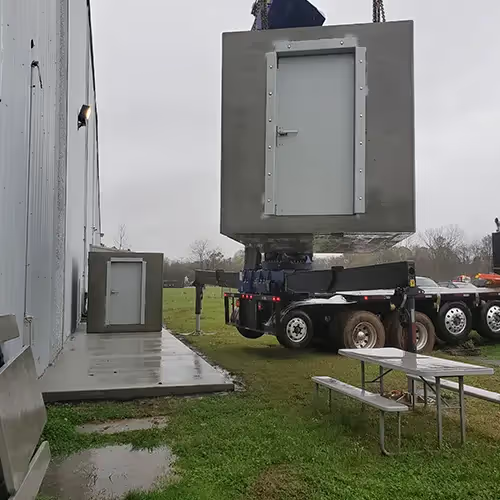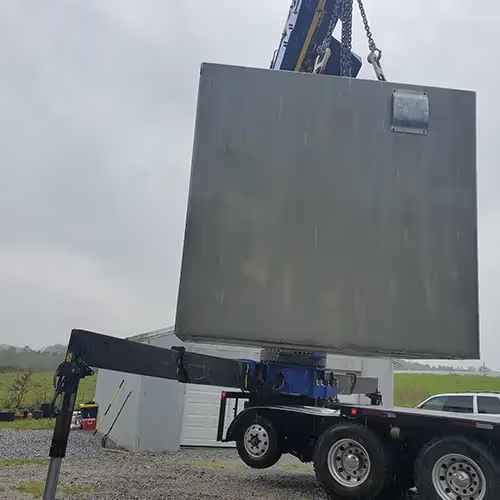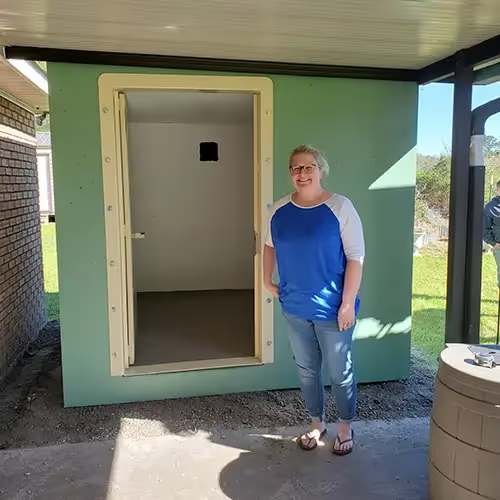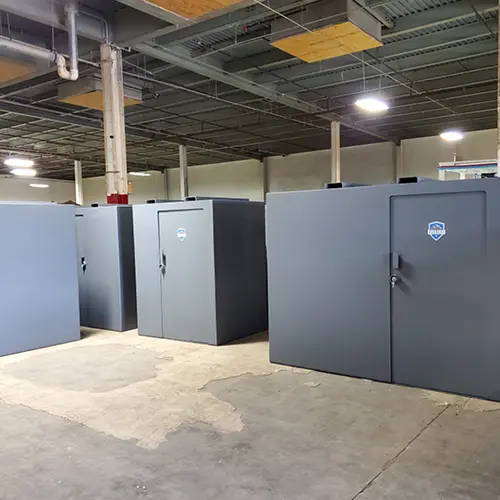Alabama Storm Shelter Installation Checklist, Permits, Site Prep, Timeline


Have you ever thought about what it really takes to install a storm shelter on your property? For many Alabama homeowners, the process can feel overwhelming—Alabama storm shelter regulations, tornado safe room permits, site prep, and timelines—it’s a lot to consider, especially when your family’s safety is on the line. A storm shelter isn’t just a structure; it’s an investment in peace of mind, security, and long-term protection. Understanding the requirements ahead of time ensures your project goes smoothly and complies with both local and federal guidelines.
This guide walks you through the full process of residential storm bunker installation, from identifying emergency shelter site requirements to planning a storm shelter construction timeline that works for your schedule. You’ll gain clarity on the permit process for safe rooms, proper site preparation, and selecting the right contractor. With these steps in mind, you can confidently tackle everything from excavation to final inspection without unexpected delays.
Using this resource, you’ll also be able to create your home tornado shelter checklist, making it easier to track your progress and ensure all safety and compliance measures are met. Following these best practices not only guarantees a functional shelter but also helps reduce storm shelter installation cost surprises, prevents unnecessary errors during storm shelter foundation planning, and aligns with home tornado shelter regulations. For additional reference on underground safety structures, you can review DIY storm cellar plans to understand basic layouts and prep work.
Understanding Storm Shelters in Alabama
Storm shelters have a long history in the South, and their importance in Alabama has only grown stronger over time. Traditionally, families relied on small underground cellars for protection, but modern shelters now follow FEMA storm shelter guidelines, safe room building codes, and Alabama tornado protection laws to provide advanced protection from severe weather events. Both above-ground and underground shelters are engineered to resist extreme wind and debris, giving homeowners confidence during storm season.
Above-ground models are reinforced and anchored to foundations, while underground shelters involve underground bunker excavation steps, proper storm shelter foundation planning, and adherence to storm shelter safety standards. Underground storm shelter dimensions are carefully calculated to provide sufficient space for families, ventilation, and emergency supplies. Today, Alabama homeowners have access to residential bunker design options, ranging from compact single-family units to larger community shelters.
Due to increasingly unpredictable weather patterns, more counties are requiring compliance with storm shelter installation permit fees, storm shelter waterproofing methods, and shelter ventilation requirements. Modern installations make it easier than ever to add protection to existing properties, whether it’s a backyard shelter, garage-adjacent safe room, or a full basement bunker. By understanding the types, regulations, and evolving industry standards, homeowners can make informed decisions while staying safe and compliant. For further insights, see storm cellar requirements for homeowners to understand what inspections and site prep are necessary.
Breaking Down the Storm Shelter Installation Process
Installing a storm shelter can feel overwhelming, but when broken down, it becomes a series of manageable steps. Each element contributes to a safe, compliant, and reliable structure that protects your family. Understanding the process also helps prevent costly mistakes and allows you to accurately estimate storm shelter installation cost, schedule your project, and ensure long-term durability.
- Permits and Regulations – Ensure compliance with Alabama storm shelter regulations, the permit requirements for storm shelters, and tornado safe room permits. Proper permitting avoids legal issues and guarantees inspections meet safety standards.
- Site Preparation – Conduct a safe room site survey to assess soil conditions, drainage, and accessibility. Follow concrete shelter preparation tips to ensure a stable foundation for either above-ground or underground shelters.
- Shelter Type and Design – Select between above-ground and underground shelters. Evaluate residential tornado safe room cost, residential bunker design options, and safe room construction materials to match your budget and needs. For more guidance, check storm shelter vs. storm cellar comparisons to understand the pros and cons of each type.
- Installation Timeline – Stick to a storm shelter installation schedule from planning to final inspection to minimize delays.
- Professional Installation vs. DIY – Hiring local storm shelter contractors ensures proper techniques, quality craftsmanship, and compliance with storm shelter safety standards. Obtain multiple storm shelter contractor quotes to compare options and warranties like residential storm shelter warranty.
By following these steps, you’ll ensure your shelter is not only safe but also efficient and cost-effective. Proper planning simplifies the installation and prevents mistakes that could compromise safety or increase expenses.
Why a Proper Storm Shelter Installation Pays Off
A properly installed storm shelter offers more than safety—it provides peace of mind, long-term security, and even potential property value increases. Investing in a safe room or underground bunker ensures your family is protected from tornadoes, hurricanes, and severe weather events, while also complying with home tornado shelter regulations and FEMA storm shelter guidelines.
Here are the primary benefits:
- Peace of Mind – Knowing your family has a safe, reliable space reduces anxiety when storms approach.
- Increased Safety – Structures built to storm shelter safety standards and safe room building codes withstand extreme winds and flying debris.
- Property Value Boost – Homes with professionally installed shelters and documented compliance, like storm shelter installation permit fees, appeal more to buyers.
- Faster Response Time – On-site shelters eliminate the need to travel to distant safe locations.
- Long-Term Durability – Using quality safe room construction materials ensures your shelter lasts for years with minimal maintenance.
A well-planned installation that follows storm shelter foundation planning, storm shelter drainage planning, and shelter ventilation requirements maximizes safety. It also provides shelter emergency supplies list organization, ensuring readiness during emergencies. Families can rely on these shelters for both day-to-day confidence and critical protection during tornado season.
Common Challenges in Storm Shelter Installation
Even with careful planning, some challenges may arise. Recognizing them beforehand allows homeowners to develop strategies and avoid unnecessary delays or cost overruns.
- Permit and Regulation Delays – Navigating Alabama storm shelter regulations, permit process for safe rooms, and tornado safe room permits may take longer than expected, especially in areas with stricter building codes.
- Site Limitations – Soil quality, slope, or high groundwater levels may require adjustments during storm shelter foundation planning and storm shelter drainage planning.
- Upfront Costs – Balancing storm shelter installation cost and residential tornado safe room cost may require financing or phased approaches.
- Space Constraints – Smaller lots may limit options for residential bunker design options or underground shelters.
- Maintenance Needs – Following a tornado shelter maintenance checklist ensures long-term reliability.
Strategies to overcome these obstacles include researching Alabama storm shelter regulations, hiring local storm shelter contractors, and conducting a thorough safe room site survey. Planning for proper ventilation, waterproofing, and supply storage with a shelter emergency supplies list will prevent issues during severe weather.
How to Put Your Storm Shelter Plan into Action
Implementing a storm shelter plan requires a structured approach. Following these steps ensures a smooth process:
- Check Local Requirements – Confirm permit requirements for storm shelters and tornado safe room permits with your city or county office.
- Assess Your Property – Schedule a safe room site survey to identify the best location considering soil, slope, and drainage.
- Select Shelter Type – Decide between above-ground, underground, or modular shelters, factoring in residential storm bunker installation, underground storm shelter dimensions, and residential tornado safe room cost.
- Secure Financing – Explore grants, insurance discounts, or payment plans to manage storm shelter installation cost effectively.
- Hire a Trusted Installer – Choose Alabama safe room contractors and review storm shelter contractor reviews for reliability and experience.
- Plan for Maintenance – Follow a tornado shelter maintenance checklist and keep a complete shelter emergency supplies list.
For more DIY insights, homeowners can reference DIY storm cellar plans to understand prep and layout options.
Looking Ahead: The Future of Storm Shelter Installations
Storm shelters are evolving as technology, materials, and weather patterns change. Modern shelters now integrate safe room construction materials, communication systems, and sustainable solutions. Modular designs shorten the storm shelter construction timeline while maintaining safety and durability.
Community-based shelters, incentives, and grants, aligned with Alabama tornado protection laws, are expanding access for families with limited space. Innovations also improve ventilation, waterproofing, and overall reliability, meeting shelter ventilation requirements and storm shelter waterproofing methods.
As technology improves, homeowners can expect smarter, faster, and more affordable installations. Combining residential bunker design options with storm shelter foundation planning and a proper safe room site survey ensures maximum effectiveness.
Wrapping Up Your Storm Shelter Installation Journey
Key takeaways:
- Permits and Site Prep – Follow storm shelter foundation planning, storm shelter waterproofing methods, and storm shelter drainage planning.
- Benefits Outweigh Hurdles – A proper residential storm bunker installation delivers safety, confidence, and compliance.
- Step-by-Step Planning Works – Use home tornado shelter checklist and follow a storm shelter installation schedule to stay on track.
Begin by checking tornado safe room permits and reaching out to local storm shelter contractors. Proper preparation today ensures your family and property are protected tomorrow. For additional insights on choosing the right contractor, see reliable storm cellar services.




